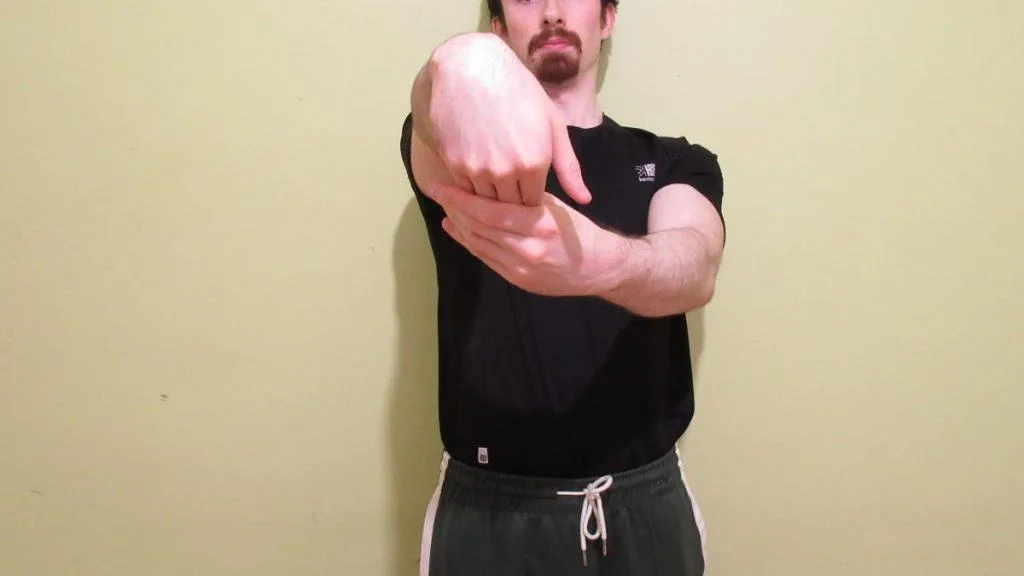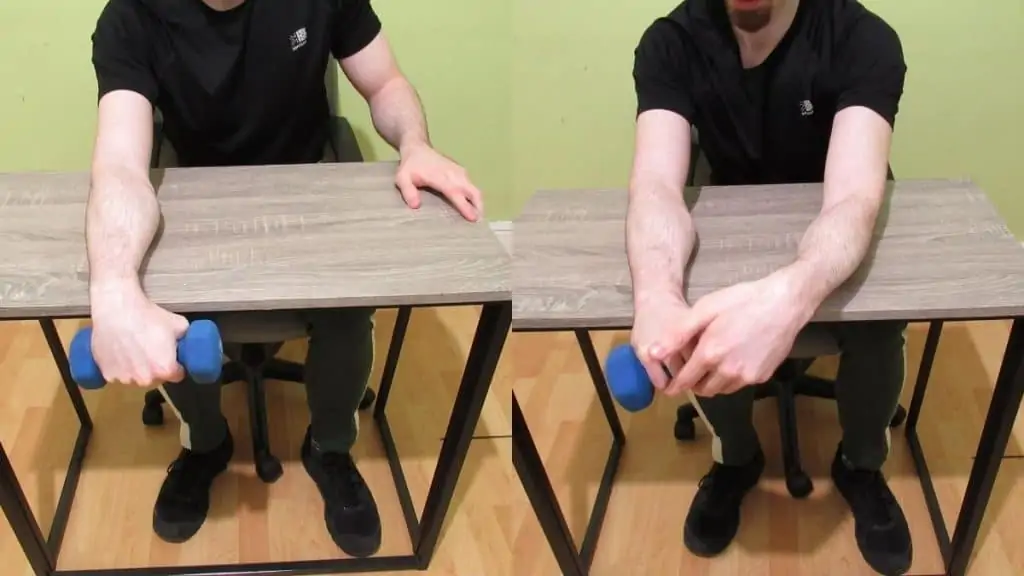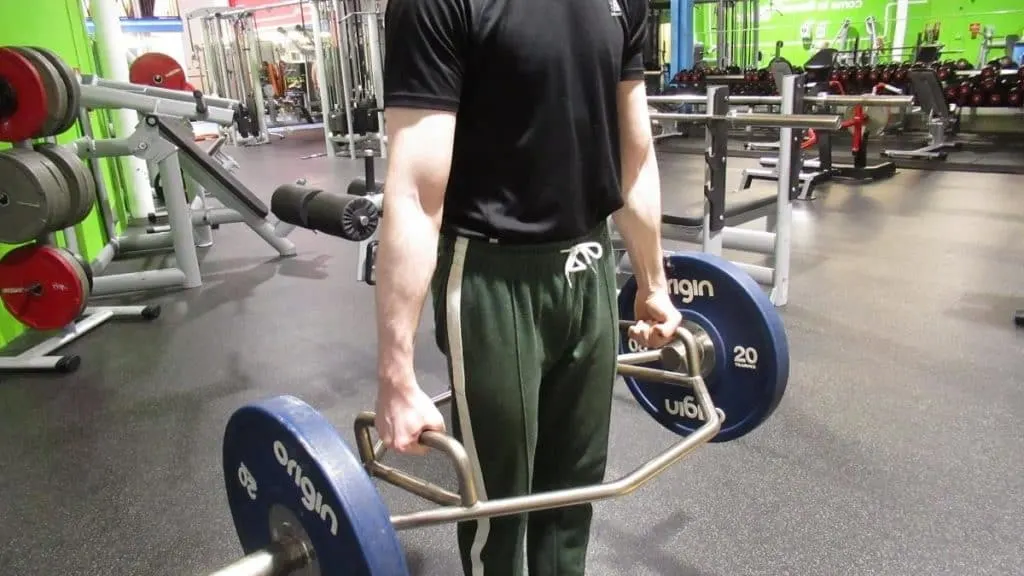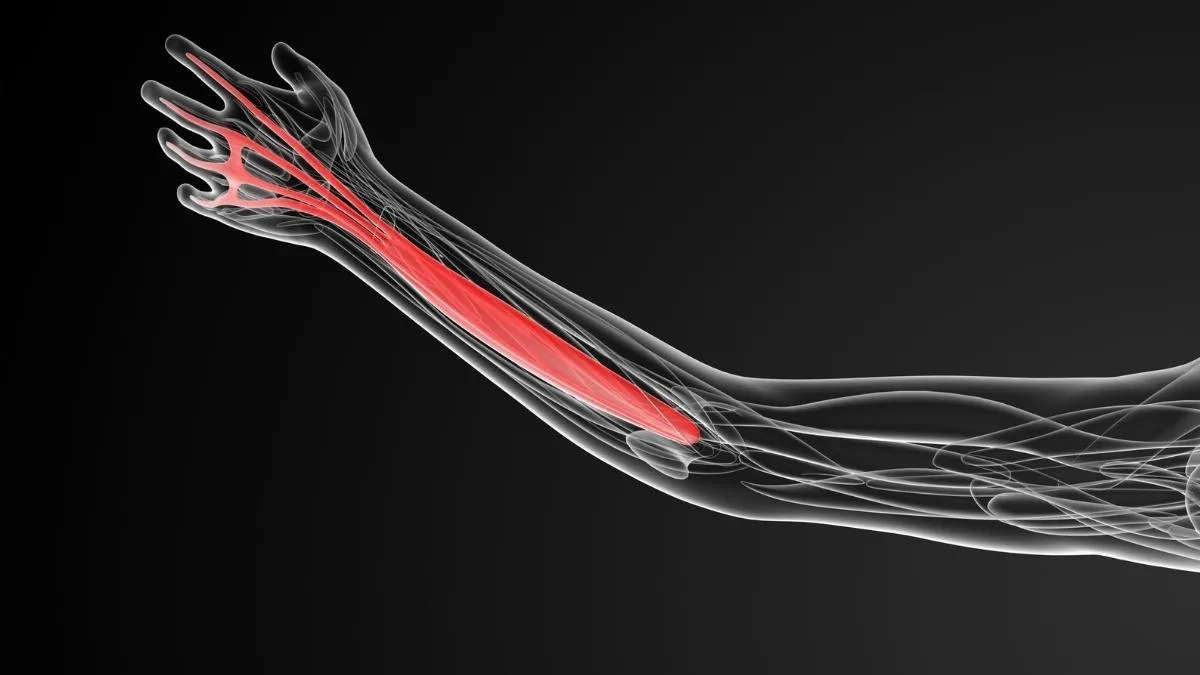If there’s one of the forearm muscles that are crucial for everyday actives, it’s the extensor digitorum. Not only does this muscle extend the wrist with the help of the other superficial extensors of the forearm, but it also extends the fingers (the 4 medial ones), which makes it a vital muscle for gripping.
So in this article, you’ll find the most effective strengthening exercises, gripping exercises, and stretches for this often overlooked muscle. Let’s get into it.
Related extensor exercises
- Extensor carpi radialis brevis exercises
- Extensor carpi radialis longus exercises
- Extensor carpi ulnaris exercises
- Extensor pollicis brevis stretches
Extensor digitorum insertion, origin, and function
The extensor digitorum is much the same as the other muscles of the posterior compartment of the forearm in that it originates from the lateral side of the humerus via the common extensor tendon. [1]
This muscle then inserts into the 4 medial fingers, making it particularly important for releasing your grip when you’re holding an object, the act of which is called finger extension. [2]
Of course, the extensor digitorum also performs wrist extension, and as such, it’s highly active when you’re typing, using a computer mouse, or performing household chores.
Extensor digitorum exercises
Depending on your goals (strength, function, rehabilitation), you may want to prioritize one or more of these exercises in your resistance training routine.
On the other hand, if you have an injured forearm, then you might want to begin your rehab routine with just the extensor digitorum stretch before moving onto the strength-based extensor digitorum exercises that I’ll also show you in just a moment.
1. Extensor digitorum stretch

- Extend your arm out in front of you and lock your elbow. Your wrist should be pronated.
- Make a first with your outstretched arm, and then curl your hand down so that your wrist is in flexion.
- With your other hand, apply a small amount of pressure to the back of your hand to intensify the stretch.
Pro tip: If this stretch is too intense, then you can actually release the first and just hold the stretch while your hand hangs loose.
2. Eccentric wrist extension

One of the biggest mistakes that I see in the gym (particularly among keen weight lifters) is the insistence on loading up on forearm exercises. While it may stroke your ego to set a new forearm curl record during a brachioradialis workout, it won’t do much for your wrist health—or your muscle growth for that matter, because the forearm extensors are very slow twitch.
- Grab a light dumbbell.
- Place your forearm on a flat surface like a bench or desk and let your hand hang off it.
- Lower the dumbbell down to the ground by bending your wrist.
- Then, with the help of your other hand, lift the dumbbell back up to the starting position.
Pro tip: Once this eccentric exercise becomes too easy, you can increase the challenge by making one hand do all of the work in a given set. And by that, I mean don’t use your other hand to lift the dumbbell on the way back up.
3. Timed hold

This exercise helps your extensor digitorum become more responsive because it trains finger extension as well as general forearm strength. I’ve recommended dumbbells here, but you can actually use any heavy household object (such as filled shopping bags) and get the same benefits.
- Grab two dumbbells and hold them by your sides.
- Look straight ahead and make sure that your spine is straight.
- Hold the weights for 30 seconds in the palms of your hands.
- Then, release the dumbbells by extending your fingers.
- Repeat the exercise for a total of 2-4 sets.
Pro tip: Even though we’re training the finger extensors here, you want to avoid holding the weight with your finger as this can actually cause elbow pain. Make your forearms work harder by holding the weights in the palm of your hand instead.
How does the extensor digitorum commonly become injured?

Like many of the smaller muscles in the human body, the extensor digitorum commonly gets injured through repetitive motions rather than by a sudden tear. Tennis elbow is a common injury associated with this muscle.
If you perform tasks such as typing and building work without taking breaks, then you may eventually get injured because your extensor digitorum and the surrounding muscles won’t get time to rest.
Performing regular extensor digitorum exercise—with plenty of rest between training bouts—is a sound prehab or rehab method for this crucial muscle.
Just make sure to focus on your form and on performing quality sets and reps rather than doing loads of needless sets. Remember, the extensor digitorum is a small muscle, so you don’t need to do many sets in order to get great results.
- Anconeus exercise
- Flexor carpi radialis exercises
- Flexor carpi ulnaris tendonitis exercises
- Flexor digitorum profundus exercises
- Flexor digitorum superficialis stretches exercises
- Flexor pollicis longus exercises
- Palmaris longus muscle exercises
- Pronator quadratus muscles exercise
- Pronator teres stretch
Conclusion: Which extensor digitorum exercises are the most effective?
For the best results, it’s always a good idea to combine a stretch with a strength-based movement so that you get stronger while also building flexibility.
In practice, I recommend warming up with some bodyweight wrist extensions and then moving onto the eccentric dumbbell exercise. This way, you can do the strength-based extensor digitorum exercise when your muscles are at their freshest.
Ending your workout—which needn’t take longer than 10 minutes—with a good extensor digitorum stretch, is a great way to relieve any tightness that might have built up in your forearms and hands throughout the day and during your training session.
References
- Grujičić, R. (2020, October 29). Extensor digitorum muscle. Kenhub. https://www.kenhub.com/en/library/anatomy/extensor-digitorum-muscle
- Wikipedia contributors. (n.d.-b). Extensor digitorum muscle. Wikipedia. https://en.wikipedia.org/wiki/Extensor_digitorum_muscle

